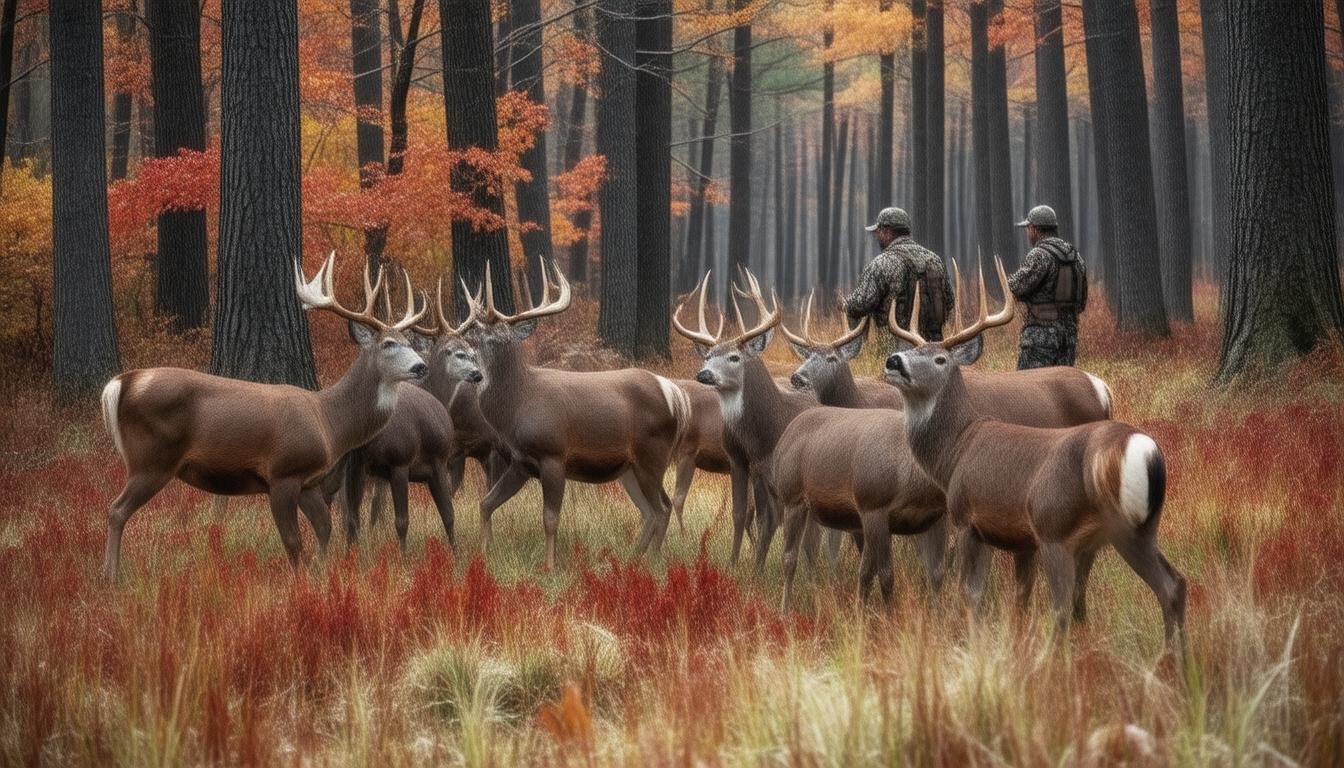In the world of North American hunting, whitetail deer hold an esteemed place as the most pursued game species, not only due to their prevalence but also their significant contributions to hunting culture and economy.
The National Deer Association’s 2025 Deer Report sheds light on emerging trends in whitetail buck harvests across the United States and Canada, offering a comprehensive overview of the state of deer hunting.
With insights drawn from the deer harvest data spanning the 2021-22, 2022-23, and 2023-24 seasons, this report highlights the dynamic relationship between hunting practices, deer populations, and regulatory changes.
As we delve into the key findings, from staggering harvest numbers to regional success rates, it becomes evident that a rich tapestry of data reveals both challenges and opportunities for hunters and wildlife managers alike.
Key Takeaways
- Over 3 million whitetail bucks were harvested in 2023, indicating stable and healthy populations.
- Pennsylvania leads in harvest efficiency with
3.8 bucks per square mile, highlighting regional variances in hunting success. - An upward trend in buck harvests in states like Louisiana and North Carolina shows a shifting deer hunting landscape.
Trends in Whitetail Buck Harvests Across North America
## Trends in Whitetail Buck Harvests Across North America
Whitetail deer are a cornerstone of North American hunting culture, often regarded as the most pursued game species due to their widespread availability and significant role in the outdoor economy.
Recent insights from the National Deer Association’s 2025 Deer Report unveil intriguing trends in whitetail buck harvests over the last three seasons—2021-22, 2022-23, and 2023-24—across 48 U.S.
states and four Canadian provinces.
The 2023 data illustrates an impressive harvest, with over 3 million whitetail bucks taken, which can surge to over 3.2 million when factoring in certain western states.
A remarkable highlight from the report is the record-setting number of harvested antlered bucks (1½ years or older), exceeding 3 million and signaling robust deer populations capable of withstanding enhanced harvest levels.
In terms of sheer volume, Texas leads the pack with an astounding 424,892 antlered bucks harvested, followed by Michigan with 207,449 and Pennsylvania at 171,600.
When evaluating harvest efficiency on a per-square-mile basis, Pennsylvania stands out with an impressive yield of 3.8 bucks per square mile, outperforming its peers including Michigan and several southeastern states.
Additionally, variation in hunter success rates reveals intriguing regional disparities; for instance, South Carolina boasts the highest success rate, with 73 out of every 100 hunters successfully harvesting a buck.
The data indicates not only a thriving whitetail population but also an encouraging upward trend in buck harvests across several states—specifically Louisiana, Rhode Island, and North Carolina—when compared to five-year averages.
This suggests a dynamic and evolving landscape for deer hunting that could influence future policies and hunting strategies.
As trends evolve, they underscore the need for sustainable practices to ensure that whitetail deer remain a viable and cherished resource for generations to come.
Regional Differences in Hunting Success and Harvest Efficiency
Hunting success can vary significantly across regions in North America, influenced by factors such as deer population density, habitat quality, and hunter participation.
The National Deer Association’s 2025 Deer Report sheds light on these dynamics, revealing that not all states experience the same harvest outcomes.
For example, while Pennsylvania leads in harvest efficiency with 3.8 bucks per square mile, states like Texas and Michigan, while having high total harvest figures, do not match Pennsylvania’s efficiency on a per-area basis.
Furthermore, states such as South Carolina demonstrate remarkable success rates, showcasing that favorable conditions and management strategies can significantly impact hunter experiences.
As these statistics highlight regional performances, they also inform future hunting regulations and conservation efforts, emphasizing the importance of localized data in understanding and improving hunting success across North America.









